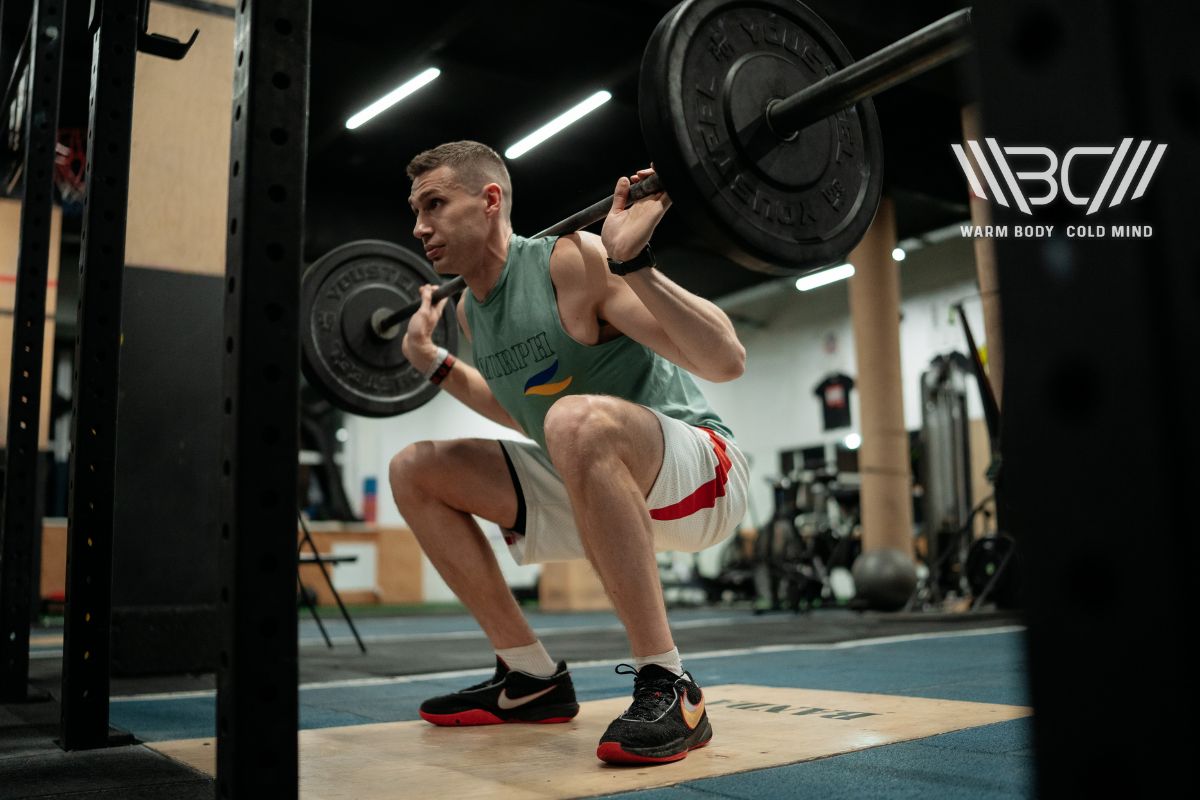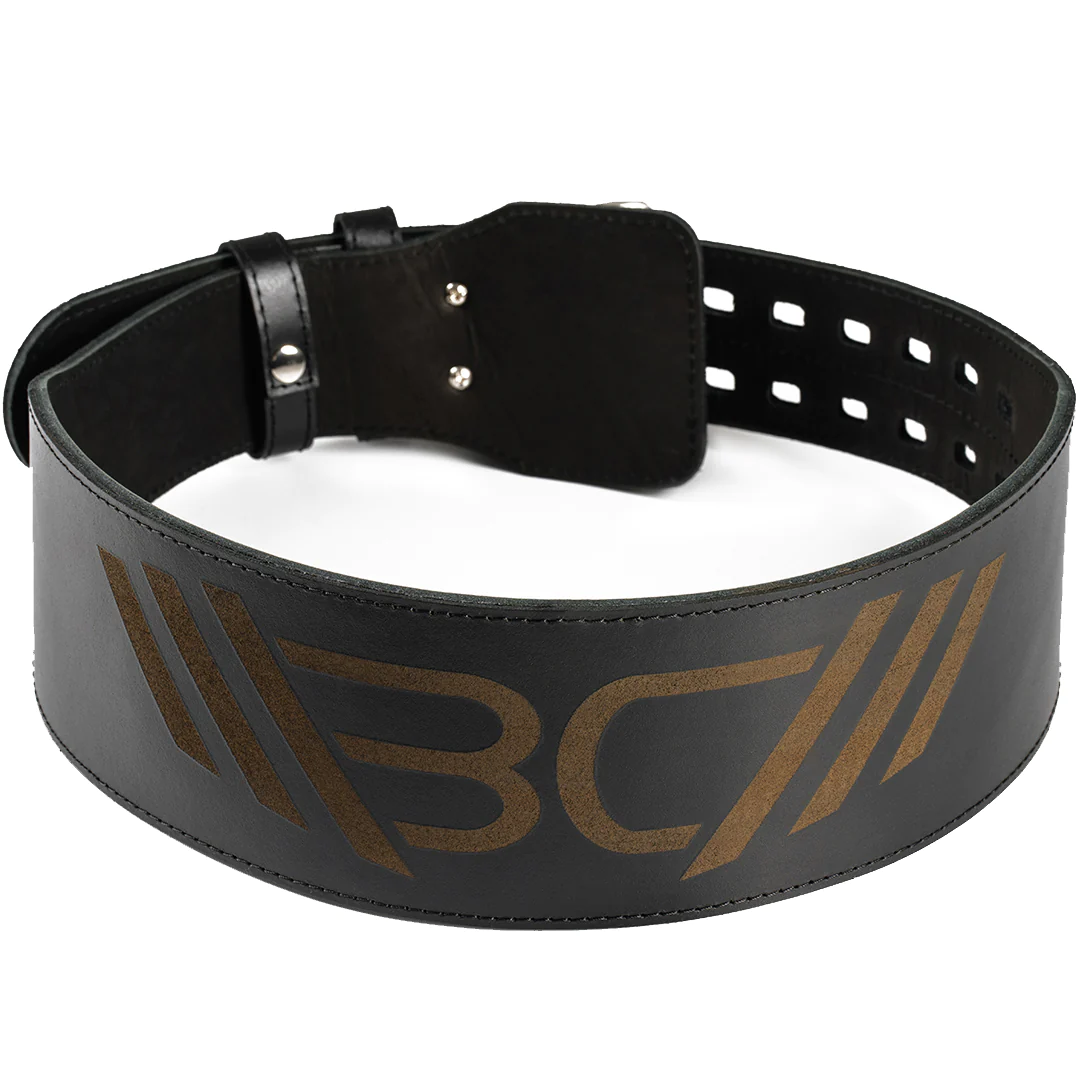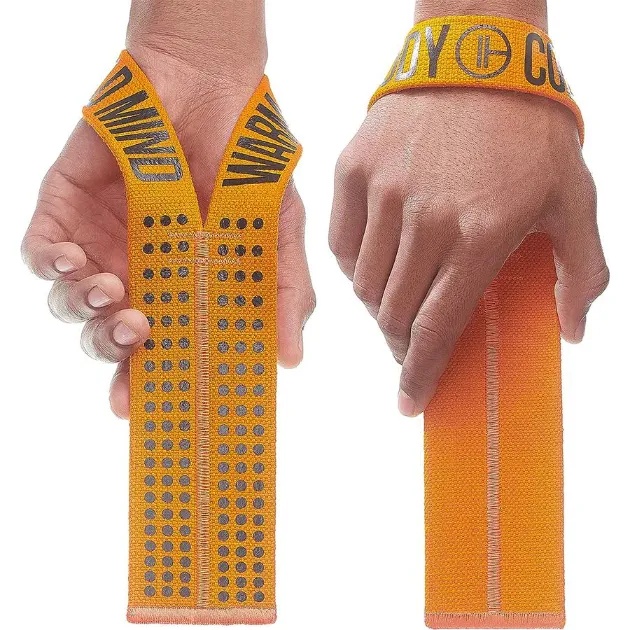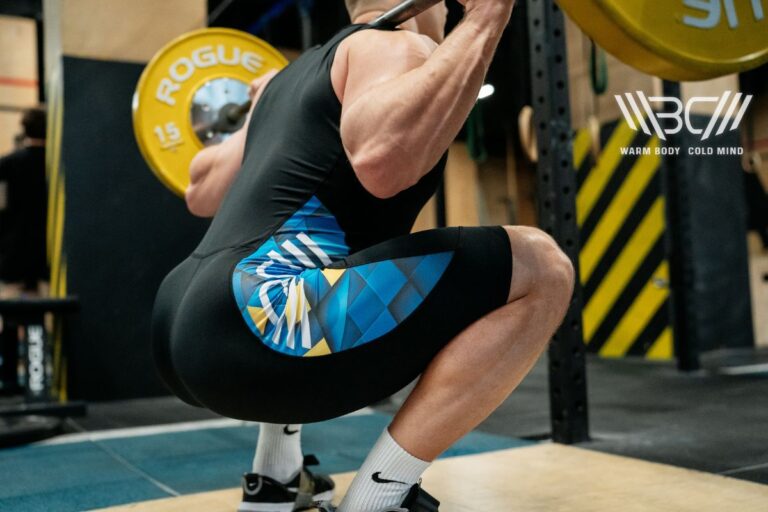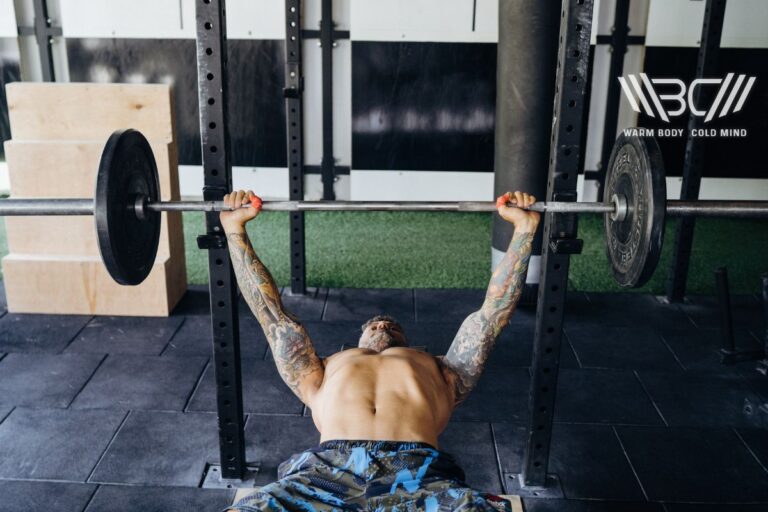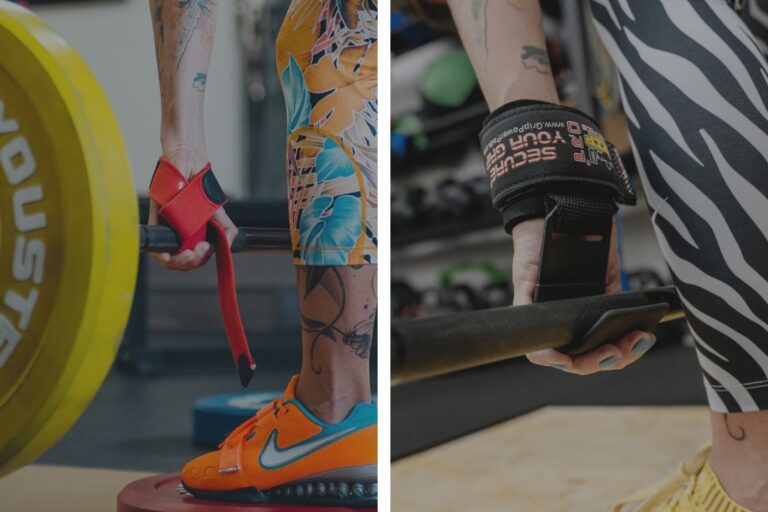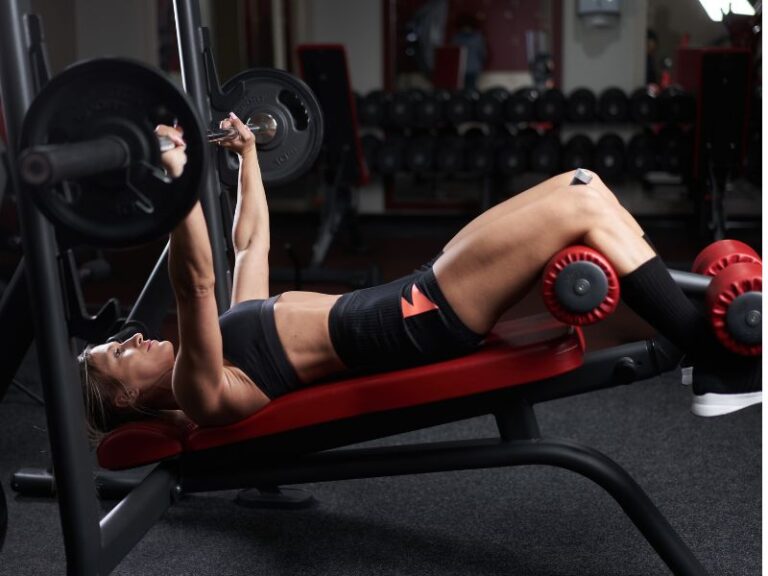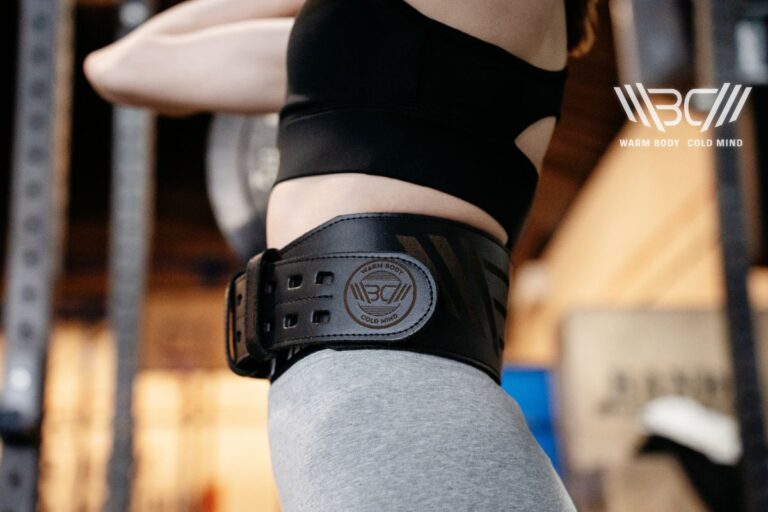Top 5 Barbell Quad Exercises for Stronger Legs
Reviewed by Jacek Szymanowski
Do you remember Johnny Bravo? Now, that’s a guy that skipped every single leg day and, as charming as he is (or is he?), you don’t want to look like him. Leg day is important, and quads play a big part in how your legs look.
You can do all sorts of exercises to build the muscles in your legs, but those that use a barbell are a game-changer. They allow you to load up your muscles with serious weight and they target your quads in a way that bodyweight exercises just can’t match, so including barbell exercises in your routine is a really smart move.
We’ve got the best exercises covered, so let’s start!
What are barbell quad exercises? – They’re strength-training movements that target the quadriceps muscles in the front of your thighs and use a barbell with added weight to do exercises like squats and lunges. They’re very effective for building muscle mass, strength, and definition.
Anatomy and Role of Quad Muscles
Why bother with understanding quads? Well, if you take a few moments and educate yourself on this, you’ll understand the barbell exercises for quads that follow better.
The quadriceps, or as we all like to call them – quads, are a group of 4 muscles located at the front of your thighs. These muscles are rectus femoris, vastus lateralis, vastus medialis, and vastus intermedius and they’re crucial for movements like walking, running, jumping, even standing up from a seated position.
Each muscle has its own job. The rectus femoris is the most unique out of the bunch because it’s involved in both the leg and hip movements.
The vastus lateralis (on the outer side of the thigh) and Vastus medialis (inner side of the thigh) primarily work to extend or straighten the knee. The vastus intermedius is deep in the thigh and helps with knee extension, too.
These muscles are the primary movers when you do exercises like squats and leg presses. They contact and exert force to straighten your knee against resistance, which then helps strengthen and build muscle in your quads.
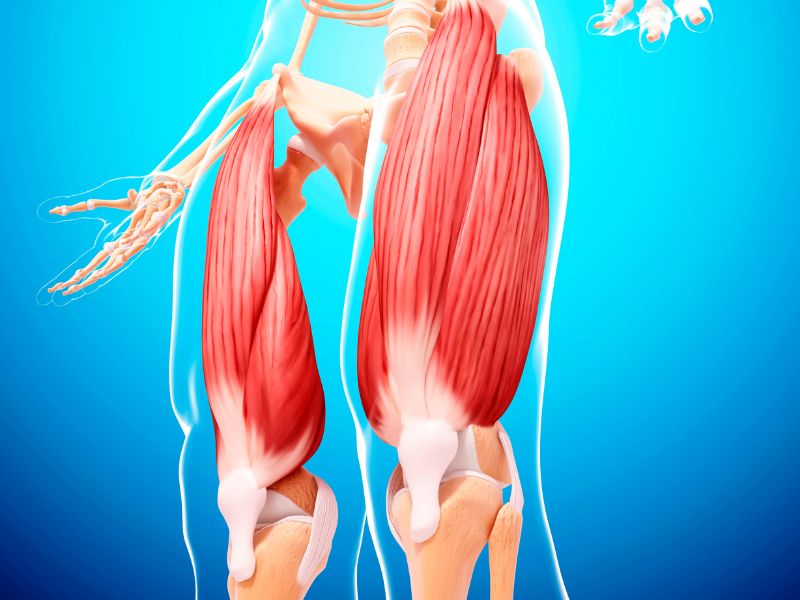
Why Barbell?
A barbell will allow you to lift heavier weights compared to bodyweight exercises alone, which is very important if you’re serious about building strength and mass in your quads. There’s also the stability and balance that quad barbell exercises provide, especially when you do compound movements like squats.
And can we talk about the versatility and variation you get? You can adjust the weight or modify your grip and stance. Every little change will target your muscles in a different way. For example, if you place the barbell in the front during squats, your quads will work harder than they would if the barbell was on your upper back.
If you’re still thinking about whether or not you need a barbell – now you know that you do.
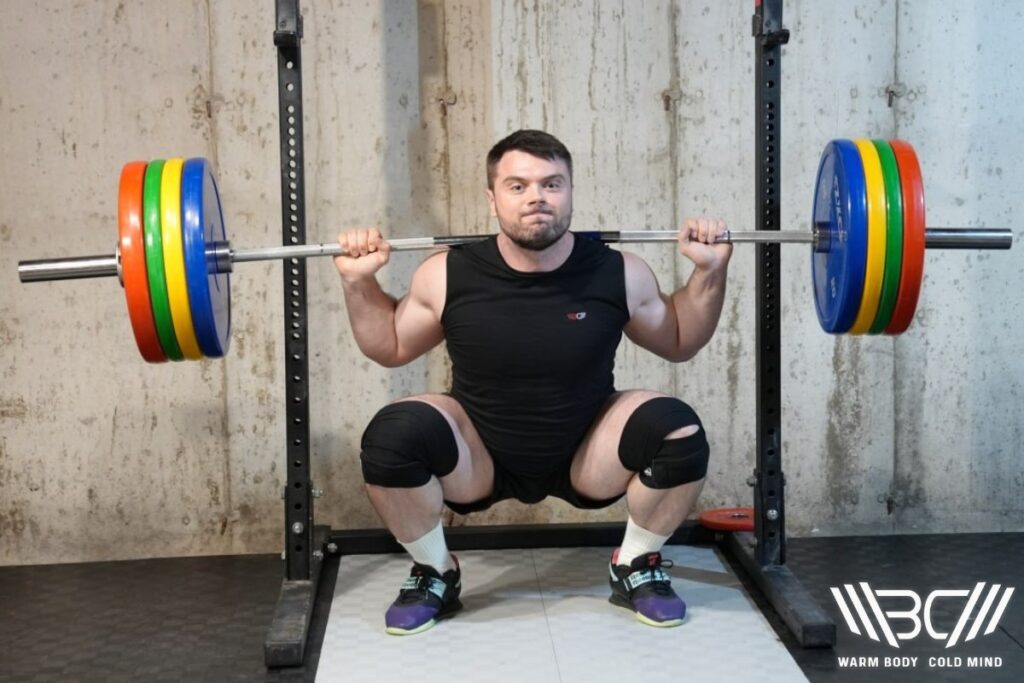
5 Barbell Quad Exercises
Let’s take a look at some superstar quad exercises with barbell that will give you the quads of your dreams!
1. Back Squat
- Muscles worked: Quads, glutes, hamstrings, lower back
- Variations: Elevated heels, B-stance
- Alternatives: Front squat, safety bar squat, hack squat
- Equipment: Barbell, squat stand, power rack
Back squats are known for being one of the most effective exercises for quads because of their biomechanics. The upright position places a lot of load on your quads, so it’s no wonder this exercise is a staple when it comes to developing strong quads. Apart from quads, they’ll target your glutes, hamstrings, and lower back.
If you struggle with mobility in your ankles, you can elevate your heels and that will help you get a deeper squat. Another common issue is muscle imbalances, so if that’s your problem, the B-stance can be a great help because it focuses more on one leg at a time.
Back squats allow for a greater loading potential than front squats because of the involvement of large muscle groups like the lower back and glutes. Also, there’s more emphasis on the posterior chain with back squats than there is with front squats. You can do them with different bar placements; high and low.
The high bar squat positions the barbell on the traps and promotes a more upright torso and greater involvement of quads. The low bar squat sets the barbell lower on the upper back, slightly above the rear delts, which allows for more hip hinge, and better engagement of glutes and hamstrings.
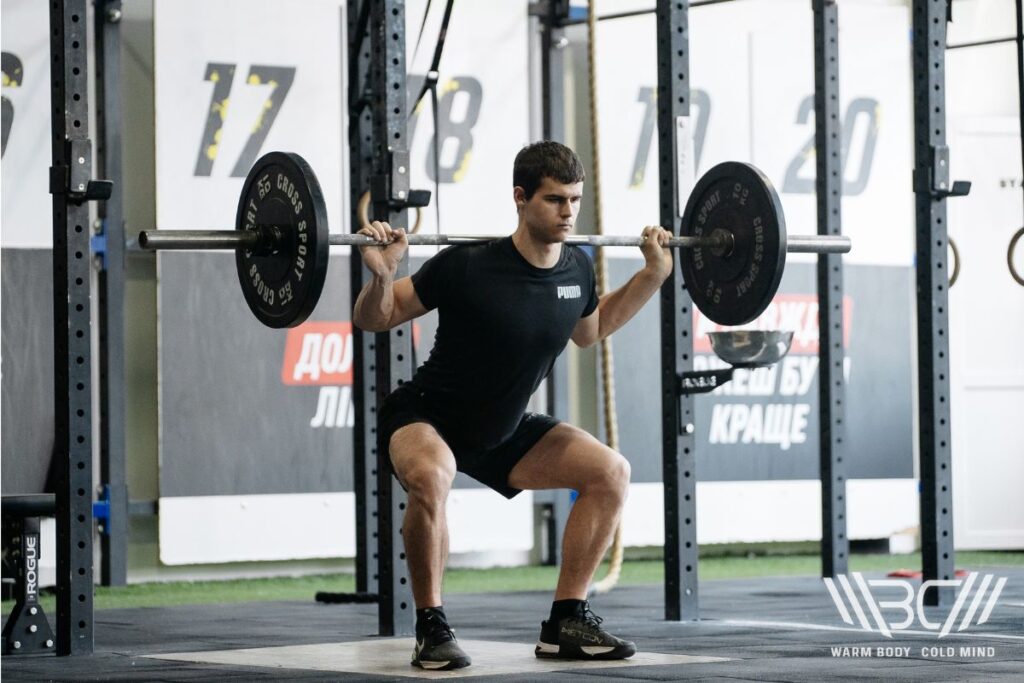
Set the barbell on a squat rack at about chest height and load it with an appropriate weight. Step under the bar and place it across the back of your shoulders so it rests comfortably on your traps. Grab the bar wider than shoulder-width apart. Step back, position your feet a teensy bit wider than shoulder-width apart and with toes straight or pointed out a little.
Keep your chest up, core engaged, and lower back slightly arched (neutral). Bend at the hips and knees at the same time and lower until your thighs are at least parallel to the floor.
Then, push back up and exhale at the top. 3-4 sets of anywhere from 6 to 20 reps is a good amount, and if you struggle with form, use a weightlifting belt to provide extra support to your core and lower back.

Enhance your strength training with Warm Body Cold Mind leather weightlifting belt providing exceptional support and durability.
2. Front Squat
- Muscles worked: Quads, glutes, core, upper back
- Variations: Crossed arms, Olympic grip
- Alternatives: Goblet squat, Zecher squat, back squat
- Equipment: Barbell
Front squats are one of the best barbell quad exercises because your torso is more upright than it is during back squats. This alignment places a greater emphasis on the quads, which are the front squats’ primary focus.
They will improve the strength and stability of your core and may improve the overall mobility and flexibility in your lower body. Compared to back squats, there’s “less stress” on your back and the load is shifted more onto the quads.

If you’re a beginner and you’re using a traditional grip (where you hold the barbell with your hands outside of the shoulders), you might struggle a bit to grip the barbell securely, so it’s a good idea to get some lifting straps that will allow for a more secure, comfortable grip.

Olympic Weightlifting Straps V1
Enhance your weightlifting experience with premium Warm Body Cold Mind Olympic lifting straps.
To do this barbell quad workout, you may also use a different grip type – cross your arms to create a shelf for the barbell to rest on and unrack the barbell from a squat rack. Place the barbell across the front of your shoulders and rest it on your anterior deltoids and clavicles.
Stand with your feet shoulder-width apart (or a bit wider) and with toes forward or pointed out a little. Keep your chest up, core tight, and elbows lifted the entire time. Push your hips back and bend your knees while keeping the torso upright and lower your body until your thighs are at least parallel to the floor.
Make sure to keep your spine neutral. Drive through the entire feet to push the weight back up and return to where you started from. Exhale at the top. Do 3-4 sets of anywhere from 6 to 20 reps and make sure your torso remains upright the entire time.
3. SSB Squat
- Muscles worked: Quads, glutes, hamstrings, lower back, core
- Variations: Box SSB squat, SSB squat jumps
- Alternatives: Goblet squat, front squat
- Equipment: SSB, power rack
These are great for your quads because of the way the barbell is positioned. The handles of the safety squat bar places less stress on your shoulders and wrists, so you can focus more on engaging your quads.
A lot of lifters find SSB squats to be more comfortable than traditional squats, but they’ll still do a fantastic job at developing your quads and glutes. People who have issues with mobility or flexibility in their shoulders and wrists will also find this variation a lot better than traditional squats.
Set up the SSB in a squat rack at chest height and load it. Step under it and place it across your shoulders and upper back so it rests comfortably. Grip the handles and stand up. Keep your torso straight and your core tight. Step back and position your feet shoulder-width apart with toes forward or pointed out a bit.
Bend at the hips and knees at the same time and descend until your thighs are parallel to the ground. Go back up and exhale at the top. 3-4 sets of 6-20 reps for hypertrophy (close to failure) for this one, as well.
Focus on keeping your elbows tucked in and your chest up; that will make it easier for you to maintain proper form.
4. Walking Lunges
- Muscles worked: Quads, glutes, hamstrings, calves, core
- Variations: Reverse lunges, stationary lunges
- Alternatives: Bulgarian split squats, step-ups, lunge jumps
- Equipment: Dumbbells, barbell (optional)
Walking lunges need dynamic stabilization and coordination while placing a decent amount of load on your quads, which is why they’re so effective at developing them. The constant movement targets your quads from different angles, so your quads develop in a balanced way.
This exercise will improve unilateral leg strength and balance, make your hamstrings stronger, and improve functional movements (apart from developing your quads, of course).
Compared to stationary lunges, walking lunges give you a greater range of motion. Stand with your feet hip-width apart and hold dumbbells by your sides or a barbell across your upper back.
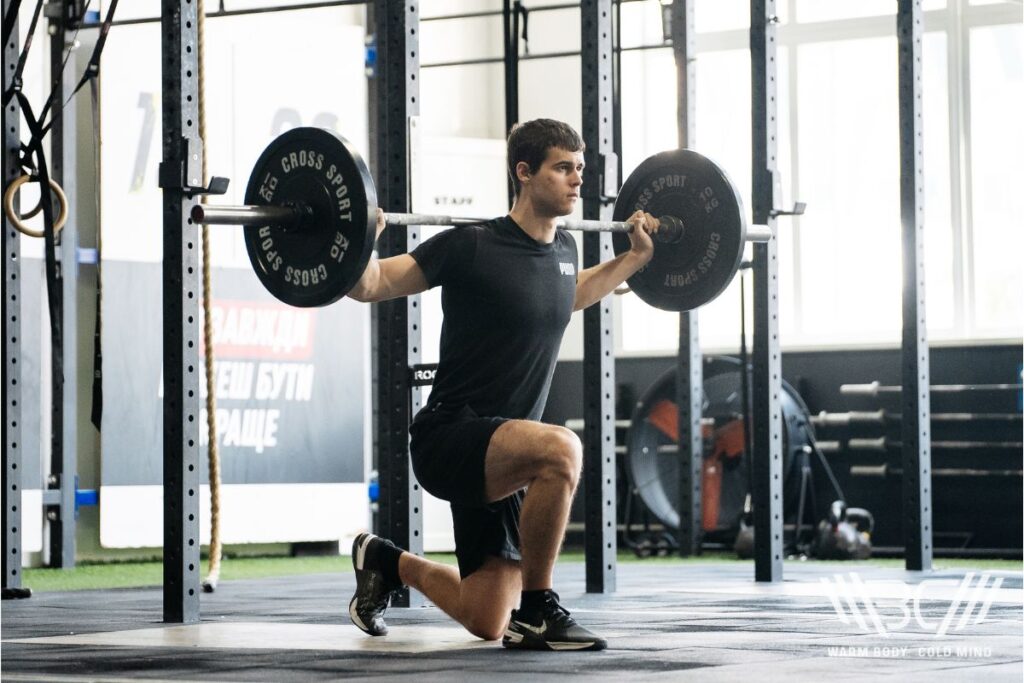
Take a large step forward with your right foot and lower your body until your knees are bent at a 90° angle or closed completely. Push through the entire foot to step forward with your left foot and bring your feet together. Repeat the movement and alternate legs with each step.
Do 2-3 sets of 10-12 lunges per leg and make your strides long to hit your hams and glutes more, or, if you take smaller strides, you’ll target your quads a bit more (if you will shift your body more forward).
5. Narrow Squat
- Muscles worked: Quads, glutes, adductors, calves
- Variations: Narrow Smith machine squat, narrow leg press
- Alternatives: Leg press, hack squat, Bulgarian split squat
- Equipment: Barbell, leg press machine, Smith machine (optional)
Narrow squats are done with a close stance, which means that glutes and hamstrings aren’t as involved. Quads, on the other hand, are very engaged, so this is a very effective way to develop them. Narrow squats place less stress on your lower back compared to wider squats, plus they enhance quad emphasis.
Get under a barbell in a squat rack and set it at a height that allows you to comfortably unrack the weight. Step under the bar, place it across your upper back and rest it on your traps. Step back and position your feet closer together than you would in a traditional squat (about hip-width or slightly narrower).
Point your toes out a little if you need and keep your chest up and core engaged. Bend at the hips and the knees at the same time and keep lowering until your thighs are at least parallel to the ground. Then, push back up and exhale at the top. 3-4 sets of 8-12 reps is a good amount.
If you struggle with range of motion due to mobility, you can add plates under your heels.
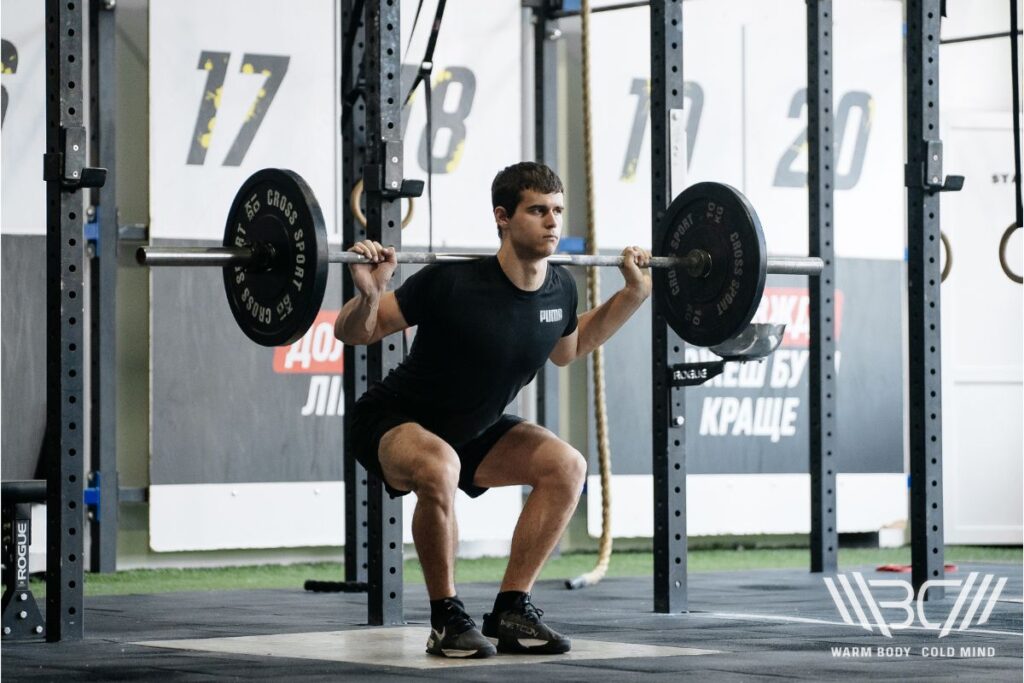
Importance of Proper Technique
If you don’t do it right, you might as well not do it at all, but don’t just take our word for it! Let’s see why everyone talks about technique so much.
1. Injury Prevention
When your technique is correct, you’re at less risk of getting injured and you’re able to target the muscles you’re trying to develop without placing too much stress on other body parts.
2. Targeted Muscle Development
Say you’re doing squats. If you lean forward too much or you let your knees cave in, it will shift the focus away from your quads and strain your lower back and knees. Good technique will make lifting effective and keep the focus on the muscles you’re trying to target.

3. Quality Over Quantity
Remember – quality always trumps quantity. It’s better to do one single movement properly than a lot of sets that are done incorrectly.
When you master the proper form, you’ll start seeing better results and issues like strains or overuse injuries won’t happen nearly as often.
Subscribe!
Get useful tips, expert insights, and in-depth analysis of training programs & nutrition plans to get the most out of your performance.
How to Add Barbell Quad Exercises into Your Routine or Workout Plan?
Barbell and leg day are a dream team, whatever your goal is – building strength, muscle, improving athletic performance… Let’s see how to include these exercises into an existing routine.
1. Volume
Go for a total of 12-20 effective sets per week, divided according to your workout split. This is a challenging, but manageable amount that’s a good foundation for progress.
For an upper-lower split with 2 sessions per week, target up to 10 sets for each session. If you’re following a FBW routine 3 times a week, distribute the volume evenly, like 5 sets in each session.
If you’re using a push-pull-legs split, dedicate the entire 12-20 sets to leg day alone. Start with 3-4 sets per exercise and do 6-12 reps per set.
2. Application for Specific Goals
Think about what you’re going after to adjust the intensity. If you’re after hypertrophy, use moderate to heavy weights with rep ranges of 6-25 reps. To build strength, use heavier weights with lower rep ranges (1-6 reps).
If your goal is endurance and conditioning, consider barbell complexes or circuits with lighter weights and higher reps.
Conclusion
If you were wondering about the best ways to build and define your quads, then you’ve found everything you’ve needed in one place. Except for a barbell. You’ll definitely need a barbell. If you don’t own a barbell, or can’t be bothered to buy one, then hit the gym.
To sum things up, we’ve talked about creating a fruitful leg day. Even though some of these exercises might seem demanding, which they surely are, you’ll love the results. If you give them a chance, that is. Start slow, and go from there. Listen to your body.
So, how’s your leg day currently looking? Do you have any nifty quad workout with a barbell (that we haven’t covered) that you can share with us?
If yu have any useful tips & tricks, or any questions or thoughts on the topic – feel free to share with us in the comments section below. We’d love to hear from our readers, and our fellow lifters.
Cheers!
References:
- Antonio Paoli, Giuseppe Marcolin, Nicola Petrone, “The Effect of Stance Width on the Electromyographical Activity of Eight Superficial Thigh Muscles During Back Squat With Different Bar Loads,” Journal of Strength and Conditioning Research 23, no. 1 (2009): 246-250.
- Eirik Kristiansen, Stian Larsen, Markus E Haugen, Eric Helms, Roland van den Tillaar, “A Biomechanical Comparison of the Safety-Bar, High-Bar and Low-Bar Squat around the Sticking Region among Recreationally Resistance-Trained Men and Women,” International Journal of Environmental Research and Public Health 18, no. 16 (2021): 8351.
- Filip Kojic, Igor Ranisavljev, Milos Obradovic, Danimir Mandic, Vladan Pelemis, Milos Paloc, and Sasa Duric, “Does Back Squat Exercise Lead to Regional Hypertrophy among Quadriceps Femoris Muscles?” International Journal of Environmental Research and Public Health 19, no. 23 (2022): 16226.
- Jonathan C. Gullett, Mark D. Tillman, Gregory M. Gutierrez, John W. Chow, “A Biomechanical Comparison of Back and Front Squats in Healthy Trained Individuals,” Journal of Strength and Conditioning Research 23, no. 1 (2009): 284-292.
- Sven Jönhagen, Paul Ackermann, Tönu Saartok, “Forward Lunge: A Training Study of Eccentric Exercises of the Lower Limbs,” Journal of Strength and Conditioning Research 23, no. 3 (2009): 972-978.
- Photos by WBCM Media team; photo by @sciencephoto, Canva.
Author: Sergii Putsov
PhD in Sport Science, Olympic weightlifting, Strength & Conditioning coach and fitness expert
Sergii Putsov is a professional weightlifter with over 20 years of experience and multiple national medals. He was a member of the National weightlifting team, competing in the 94 kg weight class. Sergii holds a master’s degree in Olympic & Professional Sport Training and a Ph.D. in Sport Science. After his athletic career, Sergii transitioned into coaching and is now responsible for designing training programs, writing blog articles, providing live commentary for international weightlifting competitions, and hosting sport and fitness seminars worldwide.
Reviewed by: Jacek Szymanowski
Performance architect, S&C movement specialist.
Jacek Szymanowski is a highly respected sports nutrition expert with a Master’s degree in Biotechnology. His innovative approach combines lifting and fighting strategies to help athletes optimize their performance. As a Strength and Conditioning Movement Specialist, he is dedicated to reducing injuries in athletes. His specialist training in Nutrition for Athletes equips him to provide expert advice on dietary habits and nutrition for peak performance.

